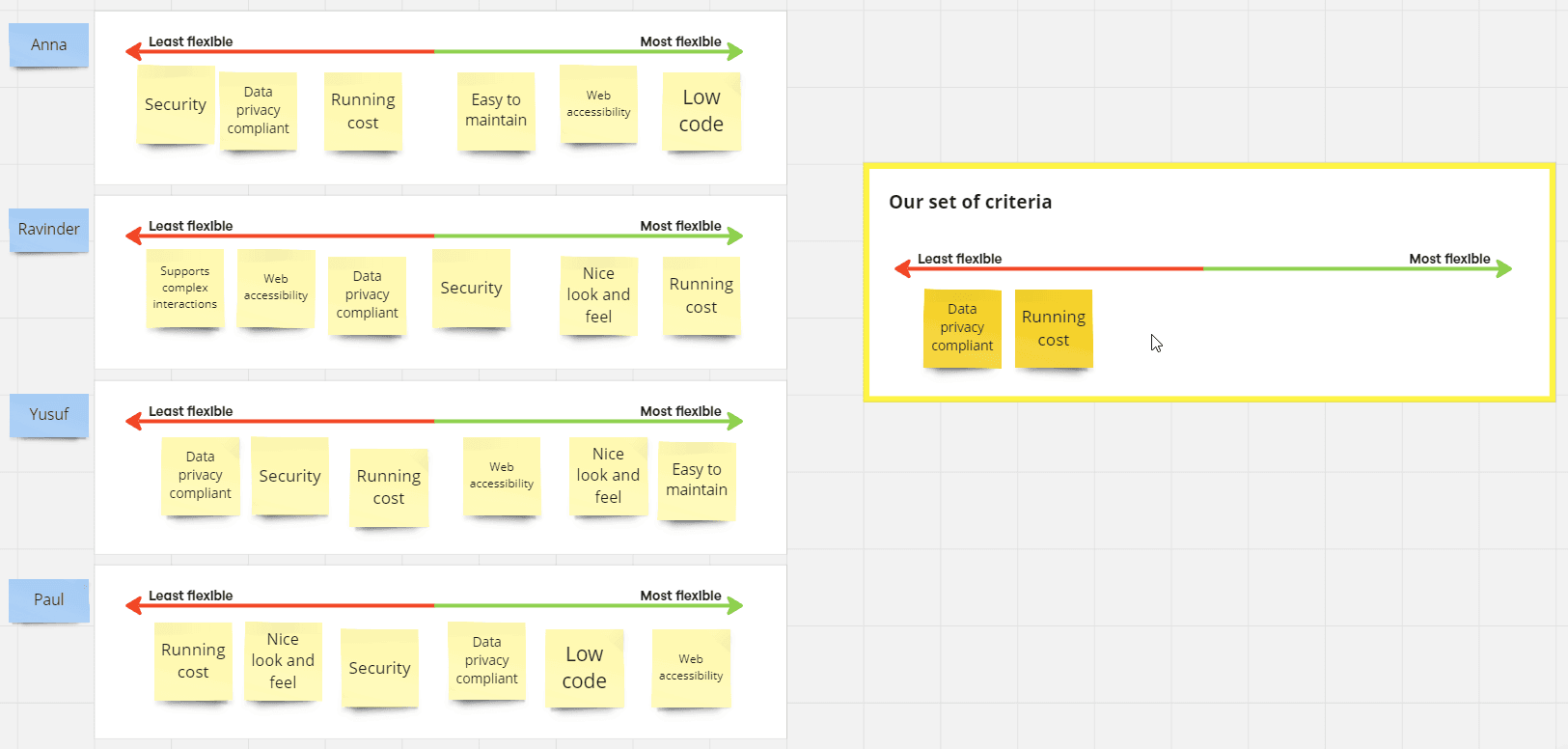Defining criteria for a decision
Goals
- Agree on the set of criteria that will be used to assess and compare ideas and select a solution to a problem
- Limit the effects of bias and noise in decisions and make the process more objective
- Get a hollistic view of everyone's requirements for success
What you need
- paper, pencils, markers, etc
- a virtual whiteboard if you're running this remotely

Preparation
- Set up a collaborative space for your team and stakeholders. If you’re facilitating the session in person, get access to a whiteboard and have post-its and markers at hand. If you're working remotely, you can set up a collaborative board in a tool such as Miro, Mural or Trello.
- Frame the decision. Make sure the decision has a clear problem statement and scope.
- Share instructions in advance of the session (optional) It might help your team and stakeholders to know the instructions and have some time to think about their own requirements for success ahead of the session.
Set the scene
Open the sessions by introducing its aim:
- We are here to agree on the set of criteria that we will use to assess and compare our ideas and select a solution to our problem
- We want to take all our individual requirements for success into account to come up with a shared set of criteria
Before moving to the main activity, remind everyone of the problem statement and scope of the decision at hand.
Brainstorm criteria
Break the group into pairs. Set a timer to 10 minutes and ask each pair to discuss and write down their shared list of criteria.
The following questions might help them think about criteria for the decision:
What characteristics would make a solution successful?
What would make a solution good enough? Safe enough to try?
What issues or constraints might arise with a solution?
What would make a solution less effective, feasible or affordable?
Regroup
Get the group back together. Give each pair 3 minutes to share their list of criteria and reserve 5 minutes for the other pairs to ask questions.
Ask people to put their criteria on the board as they share them, grouping them with similar criteria from previous pairs. By the end of the sharing round, criteria should be nicely grouped with duplicates.
Prioritise
Set a timer to 10 minutes. Give participants the following tasks to work on individually:
- From this board, pick the six criteria that are the most important to you in this decision
- Rank these six criteria from least flexible ("This criteria is non-negociable") to most flexible ("We can compromise on this criteria")
Discuss and align
Take a moment for everyone to have a read at their peers' lists.
Start the discussion: What criteria do we all agree on? Where do we disagree?
- Discuss why people have picked and prioritised the criteria on their respective lists
- Take notes of questions and concerns
- Build a shared list of prioritised criteria as the discussion goes, regularly checking agreement in the room and enquiring about differences of opinions
Record and share
At the end of the session, make sure to capture the agreed list of criteria and any supporting narrative, and communicate it with the wider team and other stakeholders.
You can use our decision framing template to record and share your criteria.